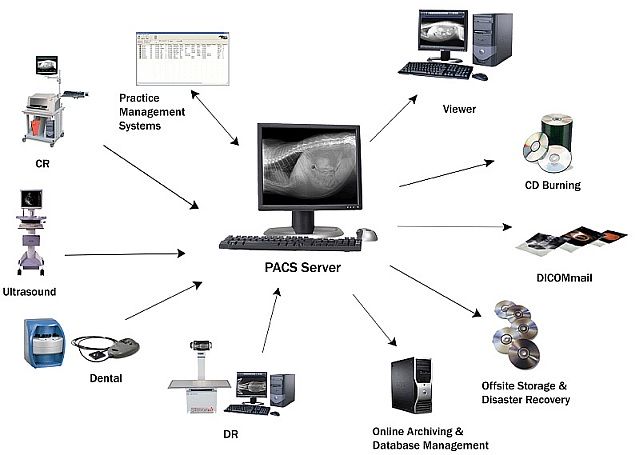The widespread adoption of PACS has revolutionized radiology departments and practices, as it expedites routine management of medical imaging archives, streamlines workflow processes, and boosts productivity.
Choosing the best PACS system or PACS vendor is an important decision that requires thoughtful deliberation. To make a well-informed choice, it is vital to understand the differences among available options. Here is a list of the types of PACS systems:-
Traditional PACS
Traditionally, PACS servers are typically situated within the hospital and medical centers. Ultra-competent IT specialists working in each facility lead the way with regard to administering these systems that interconnect and communicate with other PACS infrastructures.
Cloud-Based PACS
A Cloud-based PACS is a potent combination of traditional PACS technologies with the advantages afforded by cloud infrastructure management.
Deployment, support, and maintenance can all be carried out by healthcare IT experts, leaving physicians assured of complete peace of mind as they devote themselves to their patient’s well-being.
Hybrid Systems
Healthcare facilities can integrate a combination of onsite and cloud-based storage to create an effective hybrid cloud system.
This model provides added protection for valuable patient data while also providing redundancy in the event of any unforeseen circumstances arising.

Mobile PACS
As medical imaging is increasingly becoming digitized, many clinicians are looking to deploy mobile PACS systems in their offices.
This technology streamlines patient care by enabling physicians to access imaging data and reports from any location with an internet connection.
Remote PACS
A Remote PACS system enables physicians to work from home, on the road, or even aboard a ship. By connecting to a network of servers, radiologists can access images and reports without ever having to leave their offices.
What Attributes Should Be Considered When Evaluating A PACS system?
Now that we have gotten a feel for the various options available, let’s explore the features of interest and questions to consider in your facility.
Storage & Management
Assessing storage requirements is a critical component for procuring any PACS system. Three factors can influence the size of this investment: study volume, image modality type, and duration requirements.
The latter may vary from 7 – 21 years, depending on applicable regulations but must encompass all healthcare data – including DICOM and non-DICOM files!
Web-based Viewer
Access to patient images and data is fast becoming a standard feature of PACS systems.
Web-based solutions provide easy access to images and information stored on compatible devices, alleviating the hassles involved in maintaining system compatibility with additional software – all while being browser-based.
Therefore, a necessary inquiry to consider when evaluating PACS platforms is whether one can view visuals from different modalities.
Enterprise Viewer
Is the PACS system able to provide a zero-footprint viewer? The concept of having no software installations on client devices is quite appealing.
Performing such procedures as accessing the application through their web browser and not having any client-side installation or downloading should be highly beneficial for patients, medical providers, and facilities.
Additionally, does this system offer complete security by ensuring that there are no traces left behind within patient data?
These concerns will have to be addressed if multiple systems from various vendors may need access in order to facilitate further healthcare delivery at hospitals and clinics across the country.
In The End
To ensure optimal accessibility, your organization should select a PACS vendor that provides the following:
- User-friendly tools.
- Secure software conforming to all legal requirements.
- Customer support is not merely an afterthought – but rather front and center.
If you are seeking these qualities in a service provider, then enterprise imaging solutions will provide all the solutions needed for success!


